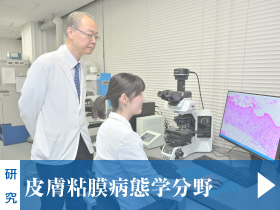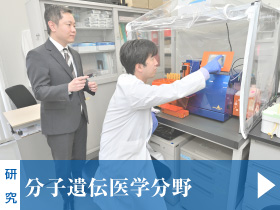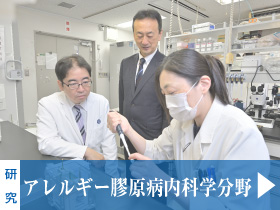A report by Dr. Gautam A. Deshpande who joined NMS DMAT and helped medical relief activities.
After the March 11, 2011 earthquake and tsunami, everyone living in Japan had a powerful internal longing to help those affected in the northeastern area of Tohoku. The many gaikokujin (foreigners) who have made their home in Japan were no different—we wanted to help. However, with resources limited and lines of communication strained to the breaking point, it was difficult to find opportunities to provide needed assistance and, as is always the case, many of us were all-too cognizant of the fact that we posed as high a risk for getting underfoot as helping out.
As a physician for the US Embassy and St. Luke’s International Hospital here in Tokyo, I felt a profound and deep sense of “calling” to provide medical assistance to the stricken areas. After numerous phone calls to various agencies and organizations, I was put in contact through an Embassy colleague with Dr. Akira Fuse of Nippon Medical School (NMS). Dr. Fuse is an emergency medicine physician and a key member of the NMS DMAT—Disaster Medical Assistance Team. Viewing our involvement as a good chance for us, a good chance for NMS, and good chance for the people of Tohoku to see that the whole world was rallying to support them, he graciously invited my team to join the NMS DMAT. We planned to meet up with them in the ravaged city of Kesennuma, one of the hardest-hit cities in Miyagi Prefecture and directly in the tsunami’s path of destruction.
I had put together a 4-person team for the trip. In addition to myself, Dr. Tom Lomax—a British physicians from Tokyo Medical Surgical Clinic—was joining us. Tom speaks great Japanese and has a background in Emergency Medicine. Also with us was one of my former Medical English students, Kay, who has a small clinic focusing on therapeutic bodywork. Kay was indispensable as both a language facilitator and as a therapist; she did some of the best work of the trip, offering much-appreciated backrubs and hand massages to evacuees. Finally, Mr. Onodera, one of the Embassy’s drivers, volunteered to drive us up—he is from Tohoku and felt a deep personal connection to the area. Taking time off from our respective jobs, we set out from Tokyo, unsure of what to expect.
We arrived in Kesennuma early and joined up with the NMS team at Kesennuma City Citizen’s Health Facility, where the daily morning DMAT meeting was going on. I stood in the back of the room, looking in stunned silence at the 100 doctors from around the country that had assembled there. I saw jackets from Kyushu, from my wife’s home prefecture of Ehime, from Kansai, from the Japan Sea coast, from Hokkaido, from Kanto. Everyone—doctors, nurses, pharmacists, health volunteers—had come together for a common goal and purpose. It was awesome. It was like standing in the back of the Hall of Justice, watching the Legion of Superheroes having their morning meeting. What moved me immensely was that Tohoku had called for help and all of Japan had answered that call.
After the business of the morning meeting—updating teams on ongoing needs, new situations, reshuffling territories, welcoming new colleagues, and saying goodbye to departing ones—the teams were divided up into subsections, each leaving the central meeting point to have smaller meetings of 3-4 teams in the suburbs of Kesennuma. We went to a small city hall about 20 minutes outside Kesennuma City and met up with the other teams. At this hub, we divvyed up coverage of the surrounding hinanjo (evacuation centers) and nursing homes and set forth. Before we did, we met a psychiatry team—one doctor and one nurse—from Hokkaido, who had set up base-camp at the hub and would be fielding all the mental health needs from this location. I admired them for being there, but I wondered if it would be enough.
My team and the NMS group left the city hall and headed to the main hinanjo under our a care, a relatively large facility inside a community center. It was housing about 60-70 evacuees. A small, military-style bivouac had been set up in the gymnasium to serve as the medical clinic. I was struck by how many medicines we had, all stacked up behind the doctor’s desk. As we entered the facility, the volunteers were smiling and friendly, surprised to see foreigners. I found them charming and gracious, though they must have been mentally and emotionally fatigued. Many were evacuees also. The women busied themselves with cooking and tidying and tending to the massive stores of donated goods also housed in the gym; the men unloaded the trucks that came to drop off more goods every hour or so. Many of the younger men had gone to clean up what remained of their homes. In contrast, the very elderly evacuees stayed mostly in the sleeping/living area—they were quiet and stoic—they neither smiled, nor wept, nor talked. The head of the center told me they were simple, strong people of the rural coast. But many had “a thousand yard stare,” that belied the horrific trauma they had encountered just a few short weeks before.
The medical work was surprisingly light. People came in for hay fever, or constipation, or coughs and colds. Some came in under the auspices of pain, but just wanted an outsider to talk to. The NMS doctors were polite and kind and offered a warm hand and an open ear. I was pleased to see how aggressively they asked about the symptoms of acute stress disorder—sleeping, anxiety, and stress. All in all, though, the pathology was no different than one would have found in a primary care clinic in the area on, say, March 10th. Sitting in the medical tent, I remembered how 9/11 was described to me as a black tag-white tag event; people either lived or they died. There was very little in between. Tohoku is just like that. Even the 93-year old man we met in one nursing home (who had dog-paddled his way from his submerged home for an hour before being rescued) complained, not so bitterly, only of his mild cold and the lack of TV. But those words were like music and it was a relief to me that there was nothing more grave to talk about.
I think Tohoku’s medical challenges that will be faced going forward are the same ones that it has faced for the last several decades—the challenge of a physician shortage, physician maldistribution, and lack of rural primary care coverage. These issues are, of course, coupled with a large elderly population of folks with chronic diseases—diabetes, hypertension, age-related failure to thrive, and dementia—not to mention those that are home-bound. It’s ironic, but in a way, my trip was uplifting despite the scale of the tragedy. Medically, the Tohoku coast has probably never had it so “good”—there are probably more doctors up there now than the areas has seen in a long, long time. I anticipate that their eventual leaving will hit the populace hard. But I do believe that the disaster has a silver lining in highlighting the longer-term needs of the area—and in that respect, I left the area with much, much more hope than that with which I had come.
Gautam A. Deshpande, M.D., Ph.D.
Staff Physician
Embassy of the United States, Tokyo, Japan
Assistant Clinical Professor of Medicine
University of Hawaii





